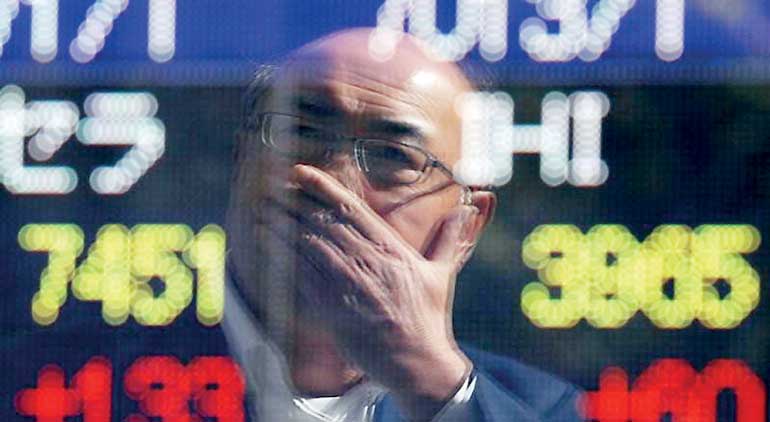Tuesday Dec 09, 2025
Tuesday Dec 09, 2025
Thursday, 26 October 2017 00:00 - - {{hitsCtrl.values.hits}}

Tokyo (Reuters): Asian shares edged higher on Wednesday, while U.S. Treasury yields and the dollar got a lift following a report that Republican senators were leaning toward John Taylor to be the next Federal Reserve chief.
European stock futures were down 0.2%, pointing to a weaker start, while Dax futures also shed 0.2% and CAC 40 futures were slightly lower.
MSCI’s broadest index of Asia-Pacific shares outside Japan shrugged off early sluggishness and was up 0.1%.
But Japan’s Nikkei stock index erased gains and finished down 0.5%, snapping a record 16 straight session of gains that had continued after the victory of Prime Minister Shinzo Abe’s coalition in Sunday’s election raised investors’ hopes that his policies would keep the yen weak.
Despite Wednesday’s share weakness, Abe’s victory should reassure overseas investors who had been concerned about policy continuity, and therefore “new money should come into the Tokyo market,” said Akio Yoshino, chief economist at Amundi Japan Ltd.
“The strength of corporate earnings should continue to support the Tokyo equity market” in the coming weeks, Yoshino said.
China’s blue-chip CSI300 index rose 0.3%, while the Shanghai Composite Index .SSEC gained 0.2%.
China’s ruling Communist Party revealed its new leadership line-up on Wednesday when President Xi Jinping introduced his Politburo Standing Committee, culminating a week-long party congress. The line-up broke with recent precedent by failing to include a clear successor to the president among the seven-man line-up.
On Tuesday, U.S. President Donald Trump used a luncheon with Senate Republicans to get their views on who he should tap to be the next leader of the Federal Reserve, according to senators who attended.
A source familiar with the matter said Trump polled the Republicans on whether they would prefer Stanford University economist John Taylor or current Fed Governor Jerome Powell for the job, and more senators preferred Taylor.
Taylor is seen as someone who may put the central bank on a faster path of interest rate increases.
That helped send U.S. benchmark 10-year Treasury note yields to their highest since March.
The 10-year yield stood at 2.419% in Asian trade, up from its U.S. close of 2.406% on Tuesday, when it rose as high as 2.428%.
“The U.S. 10-year Treasury yield is heading higher, so that is supporting the dollar in general,” said Masafumi Yamamoto, chief forex strategist at Mizuho Securities.
The dollar was briefly dented on Tuesday by a CNBC report, citing an aide of Senate leader Mitch McConnell, that three GOP Senators may not back the Republican tax bill.
“The base line is that a U.S. tax cut will eventually materialize, and that’s supporting the dollar and pushing up the U.S. Treasury yields,” Yamamoto said.
The dollar was slightly lower on the day at 113.86 yen, though within sight of a three-month high of 114.10 yen touched on Monday.
The Australian dollar skidded 0.7% to $0.7718, touching its lowest levels since mid-July after weak consumer price figures prompted investors to pare expectations of further tightening from the Reserve Bank of Australia.
On Wall Street on Tuesday, stronger-than-expected results and forecasts from companies including 3M and Caterpillar also fuelled optimism about economic strength, with the Dow Jones Industrial Average closing at a record high.
European shares closed mixed on Tuesday ahead of Thursday’s European Central Bank meeting at which policymakers are expected to signal they will take small steps away from their ultra-easy monetary stimulus.
The euro was steady on the day at $1.1762, while the dollar index, which tracks the greenback against a basket of six major rivals, was up 0.2% at 93.937.
Crude oil futures caught their breath after rising more than 1% overnight after top exporter Saudi Arabia said it was determined to end a supply glut. Prices also drew support from forecasts of a further drop in U.S. crude inventories as well as nervousness over tensions in Iraqi Kurdistan.
Brent crude was flat at $58.33 a barrel, while U.S. crude shed 12 cents to $52.35.